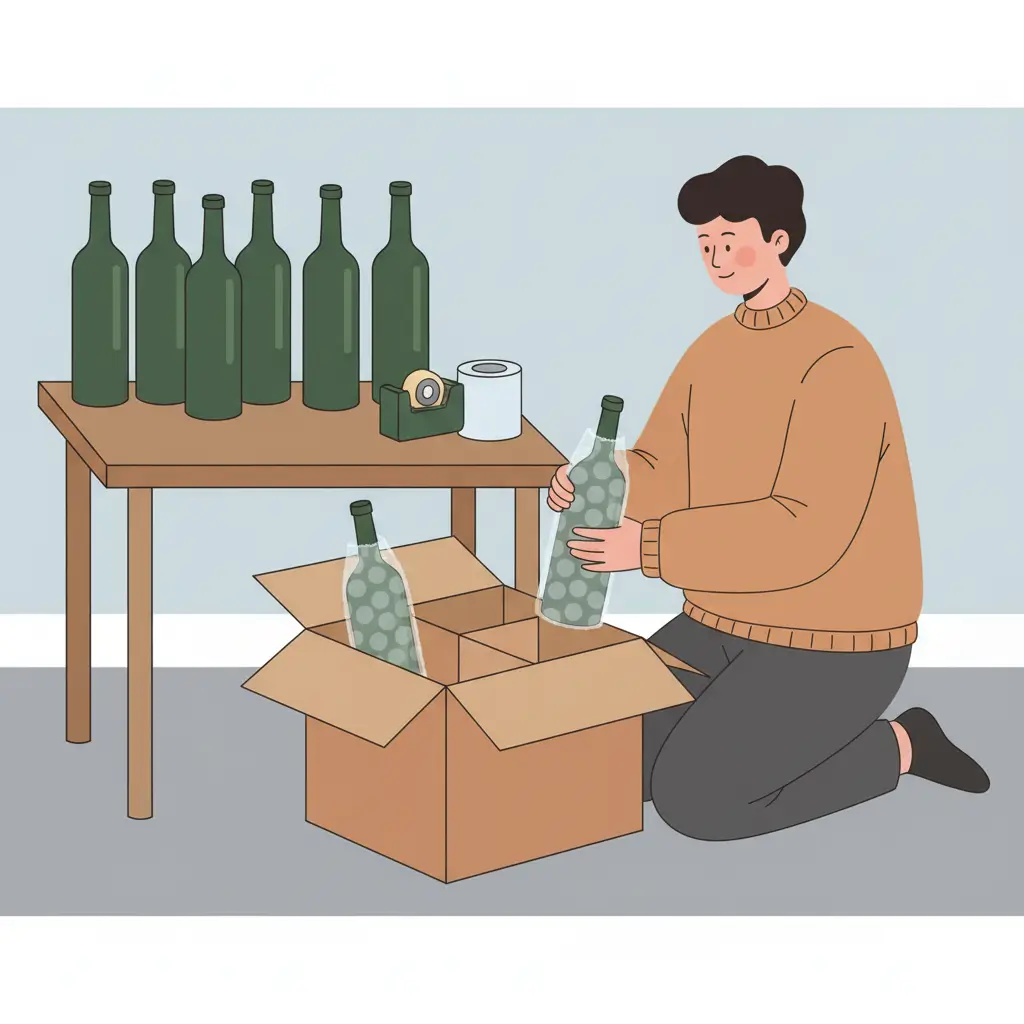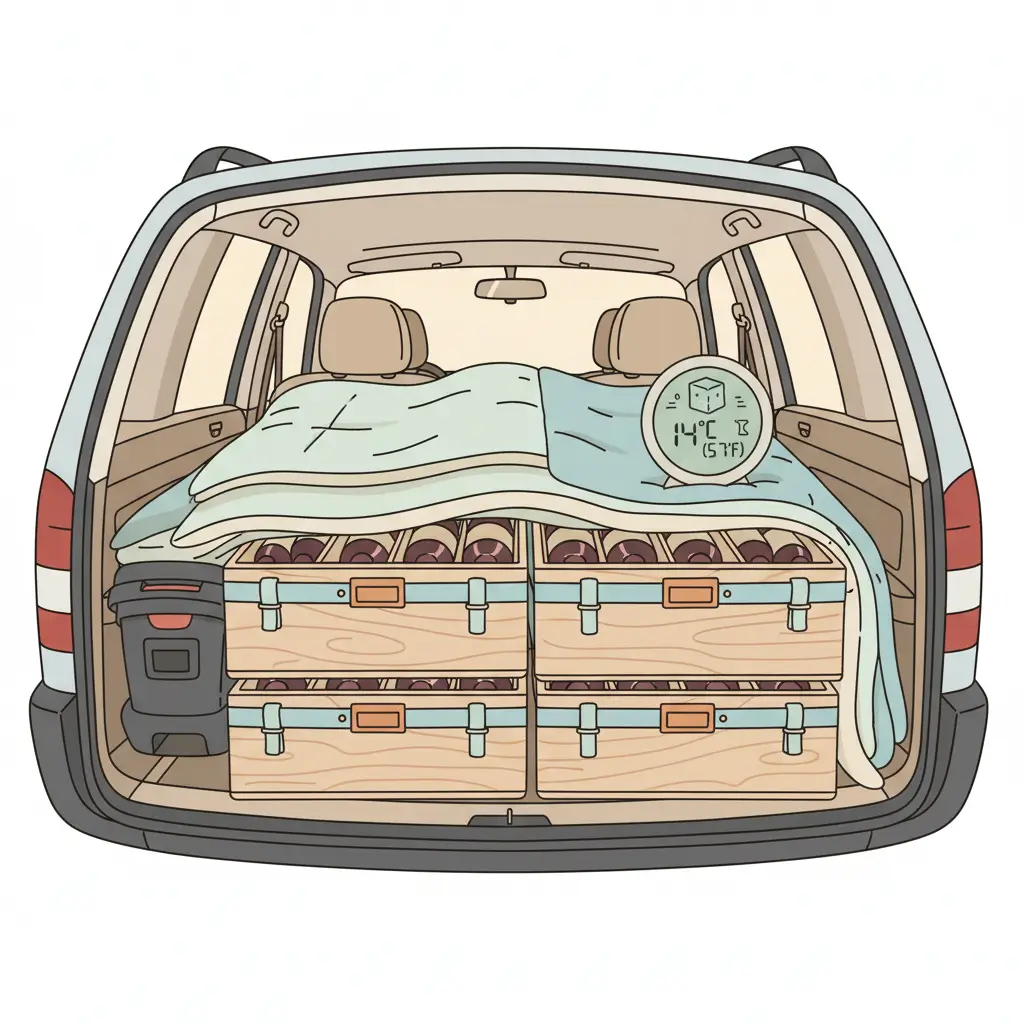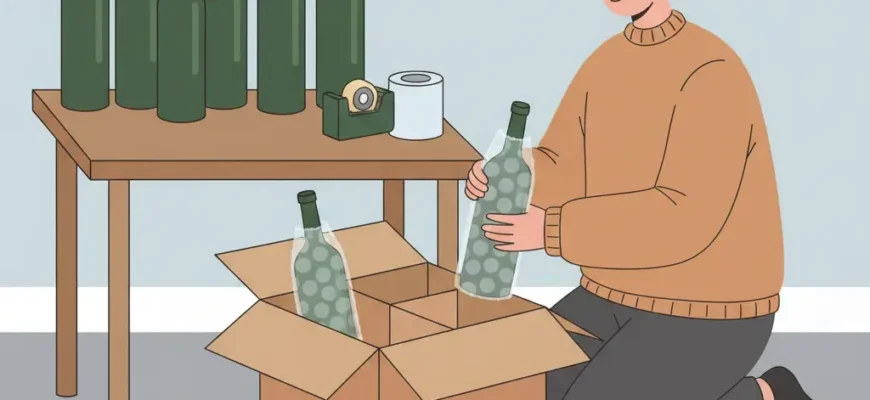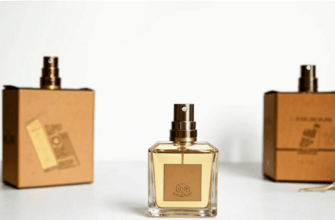The greatest challenge that comes when moving wine bottles is that there is a great chance that the bottle may break or the wine itself may go bad because of various reasons. It does not matter whether one is moving from one part of the country to a different part or within the same city; the most important thing is that the wine should reach its destination without any damage. This article will provide you with detailed instructions on how to pack wine for moving so that it does not get damaged during the journey.
- Why Proper Packing is Important
- Materials You’ll Need
- Step-by-Step Process Guide
- 1. Gather Wine Boxes with Dividers
- 2. Wrap Each Bottle
- 3. Place Bottles in Divided Box
- 4. Fill Empty Spaces
- 5. Seal and Label the Box
- 6. Remember to Control the Temperature
- 7. Optional: Double Box the Wine Box
- Advice for Moving Wine Bottles Safely
- Packing Checklist for Wine Bottles
- Conclusion
Why Proper Packing is Important
Just like any other container that contains wine, a wine bottle is made using glass, a material that is delicate and can break easily. On top of that, it is well known that wine is also very sensitive to temperature, so in cases where the wine bottle is exposed to extreme elements, the taste of the wine itself gets affected. In regards to this, it is important to note that proper packing will create a barrier to external elements that could have damaged the bottles and will also allow very minimal exposure to temperature.

Materials You’ll Need
Prior to packing, the materials given below should be on hand:
- Wine shipping boxes that are strong in construction and come with dividers vertically
- Bubble wrap and sealing tape
- Pack paper and cushions that are soft
- Symbols used for labeling the boxes
- Lightweight foam pieces or other materials
- Ziploc bags, if anybody wants an extra layer of fat
Step-by-Step Process Guide
1. Gather Wine Boxes with Dividers
If the bottle of wine is to be moved, the most favorable method would be to put it in a wine bottle shipping box that has dividers so the bottles do not scratch against each other. These specially designed boxes have enough space to separate the adjacent bottles, which minimizes the chances of damage.
2. Wrap Each Bottle
When placing the bottles in the box, bubble wrap should be utilized to cover each wine bottle. Start by lightly wrapping a wine bottle with bubble wrap and placing it in the center of the sheet. This wrap should be secured in place using packing tape. This accomplishes the goal of shielding the glasses from outside shocks.
3. Place Bottles in Divided Box
Each wine bottle, which is wrapped, should now be placed in a wine shipping box through the dividers. Check whether the bottles are well secured and do not move. In the event that no divided box is used, bottles should be kept in an upright position and closely stuffed with cushioning materials to prevent lateral movement.
4. Fill Empty Spaces
After the bottles have all been placed in the box, any leftover areas should be filled with packing paper or foam. Such practice secures the bottles’ placement during transportation as the chances of breakage are minimal if the bottles do not move.
5. Seal and Label the Box
After the bottles have been packed safely, the box should be sealed using a tape. Prioritize clear writing, such as ‘Fragile’ and ‘This Side Up’ when placing the box during transfer.
6. Remember to Control the Temperature
Wine cannot withstand the slightest changes of temperature, so never leave the boxes in a hot and humid zone like direct sunlight, or other such hotspots. When traveling in extreme temperatures, one should consider appropriate moving options that are temperature-controlled.
7. Optional: Double Box the Wine Box
As further security, one can drop the wine box into another larger box with packing foam or foam peanuts inside. This helps ensure that you don’t break your expensive bottles too easily.

Advice for Moving Wine Bottles Safely
- Avoid leaving wine bottles in direct exposure to extreme temperatures: If within transport distance, as much as possible, avoid exposing the wine to direct sunlight or extreme cold, such as ice packs.
- Transport in your vehicle: Most often, if not all the time, for limited collections, wine bottles can be transported in your personal vehicle rather than a moving truck so that you have more control over how they are handled and the temperature.
- Consider wine insurance: If planning to move an expensive wine collection, one might think of getting it covered while on the move.
- Don’t move your wine from its location for a while: It is recommended to let the wine settle for about a week after moving before trying to open it. This is necessary in order to allow the sediment to settle down after the transport disruption.
Packing Checklist for Wine Bottles
| Task | Completed (✓) |
|---|---|
| Gather wine shipping boxes that have dividers | |
| Wrap every wine bottle with bubble wrap | |
| Place the bottles in a divided box | |
| Fill in the spaces left empty with cushioning materials | |
| Seal and label the box as ‘fragile’ and ‘this side up’ | |
| Do not expose to extremely high and low temperatures | |
| Consider wine insurance |
Conclusion
Notice how the last sentences holistically comment about the expectations that people placing snowboards. CAVEAT: There is no attempt to demonstrate reasoning or provide evidence-based dependencies. Do you have comments regarding the style of the piece? Feel free to share them in the comments section. Don’t forget to give feedback on this post to help us improve. Embracing procedures sounds tedious and boring. There are rare cases when wine bottles are packed for relocation. Now let us look at the expectations and head towards fulfillment.


